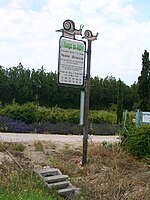
Photo from wikipedia
Abstract Ripe peaches offer better flavor and taste but are more susceptible to mechanical damage than mature peaches. This study evaluated the protective performance of three cushioning materials (polyurethane (PU)+corrugated… Click to show full abstract
Abstract Ripe peaches offer better flavor and taste but are more susceptible to mechanical damage than mature peaches. This study evaluated the protective performance of three cushioning materials (polyurethane (PU)+corrugated fiberboard boxes (CFB), expandable polyethylene (EPE)+CFB and CFB) and their packaging formats against mechanical damage to ripe peaches under simulated transportation at different vibration temperatures. In the first test, a 3-compartment tray was designed to study the isolated effect of only vibration force on an individual peach. The second test was conducted to verify the results of the first test and showed that the packaging format of PU + CFB performed better than the EPE + CFB and CFB formats. Moreover, ripe peaches vibrated at 10 °C had less damage than those vibrated at 20 and 30 °C. In addition, the bruise area, decay rate, and total phenolic contents of ripe peaches had significant linear correlations with each other on the first day after vibration.
Journal Title: Food Packaging and Shelf Life
Year Published: 2020
Link to full text (if available)
Share on Social Media: Sign Up to like & get
recommendations!